147
153
158
164
169
175
180
186
191
5’3”
107
113
118
124
130
135
141
146
152
158
163
169
175
180
186
191
197
5’4”
110
116
122
128
134
140
145
151
157
163
169
174
180
186
192
197
204
5’5”
114
120
126
132
138
144
150
156
162
168
174
180
186
192
198
204
210
5’6”
118
124
130
136
142
148
155
161
167
173
179
186
192
198
204
210
216
5’7”
121
127
134
140
146
153
159
166
172
178
185
191
198
204
211
217
223
5’8”
125
131
138
144
151
158
164
171
177
184
190
197
203
210
216
223
230
5’9”
128
135
142
149
155
162
169
176
182
189
196
203
209
216
223
230
236
5’10”
132
139
146
153
160
167
174
181
188
195
202
209
216
222
229
236
243
5’11”
136
143
150
157
165
172
179
186
193
200
208
215
222
229
236
243
250
6’0”
140
147
154
162
169
177
184
191
199
206
213
221
228
235
242
250
256
6’1”
144
151
159
166
174
182
189
197
204
212
219
227
235
242
250
257
265
6’2”
148
155
163
171
179
186
194
202
210
218
225
233
241
249
256
264
272
6’3”
152
160
168
176
184
192
200
208
216
224
232
240
248
256
264
272
279
6’4”
156
164
172
180
189
197
205
213
221
230
238
246
254
263
271
279
287
Are You at Risk for Heart Disease?
37
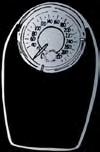
Guide to a Healthy Weight
Body mass index can be used to indicate if you are overweight or obese. Height and weight are used to find your BMI on this chart.
■ You have a healthy weight if your BMI is 18.5 to 24.9.
■ You are overweight if your BMI is 25 or higher.
■ You are obese if your BMI is 30 or higher.
My weight is:
❑
Healthy: I will keep this weight.
❑
Overweight: I will take steps to lose weight.
❑
Obese: I wil ask my doctor or a registered dietitian for help to lose weight.
2. Measure your waist.
Measure your waist by placing a measuring tape snugly around your waist.
Write down your waist measurement. _____________
Your waist measurement is high if:
■ Women—Your waist measurement is more than 35 inches.
■ Men—Your waist measurement is more than 40 inches.
My waist measurement is: o Healthy o High A high waist measurement increases your risk for
heart disease.
If your waist measurement is high, take steps to lose weight.
38
On the Move to Better Heart Health
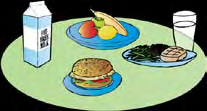

How To Start Your Family Plan To Lose Weight
Remember:
If you are overweight or obese, losing about 10 pounds can help you lower your risk for heart disease.
Lose weight slowly, about 1 to 2 pounds a week.
■ Pick a day to begin.
■ Change one thing at a time.
■ Make the changes slowly. Stick to them.
Try These Steps To Lose Weight
1. Choose and prepare foods in a heart healthy way.
■ Choose fat-free milk
or low-fat (1%) milk
and cheese.
■ Eat fruits and vegetables
without sauces.
■ Prepare vegetables with light
margarine instead of butter or
cream sauces.
■ Drink water or other calorie-free
drinks instead of regular soda.
Are You at Risk for Heart Disease?
39

■ Go easy on fruit juices because they are high in calories and sugar.
■ Try to eat fruit more often than you drink juice and you will also get more fiber.
■ Eat lean cuts of meat and fish.*
■ Eat low-fat and no-added-sugar ice cream and yogurt.
■ Bake, broil, or grill foods instead of frying.
■ Cook without meat fat or lard.
*Pregnant and nursing mothers: Talk to your health care provider to find out the types of fish you can eat that are lower in mercury. Mercury may be harmful for your baby.
40
On the Move to Better Heart Health

2. Read the Nutrition Facts labels to choose foods lower in calories and sugar.
Compare the Nutrition Facts for water and regular soda.
Which would you choose?
Water
Regular Soda
Regular soda has 140 calories and 39 grams of sugar.
The water has no calories or sugar.
3. Limit your portion size.
■ Eat more fruits and vegetables
with your meals.
■ Eat small meals and healthy
snacks throughout the day
instead of one big meal.
Are You at Risk for Heart Disease?
41

■ When eating out:
• Split a main dish with a friend.
• Order two small side orders, such as a half sandwich and salad instead of a large entree.
• Divide your main dish in half as soon as you get it.
Ask the waiter to wrap the other half “to go.”
4. Say “Yes” to physical activity.
Physical activity helps you improve your heart health, reduce stress, and feel better. Make it your answer to feeling tired, bored, and out of shape. Follow the steps below to get started.
1. Set your goal.
Start slowly and work your way up.
2. Do your favorite moderate physical
activity for 30 to 60 minutes on
most days.
If you are short on time, divide it
up. For example, walk for 20
minutes three times a day.
3. Write down the activities you
plan to do.
42
On the Move to Better Heart Health


Examples of Moderate and Vigorous Activities
Moderate Activities
■ Brisk walking
You may breathe harder, or your heart
■ Dancing
may beat faster. You should still be
able to talk with a friend.
■ Lifting weights
■ Riding a stationary bike
Vigorous Activities
■ Doing aerobic exercises
You may breathe harder, or your heart
■ Jumping rope
may beat very fast. It will be hard to
talk with a friend at the same time.
■ Playing sports
■ Using the treadmill
Are You at Risk for Heart Disease?
43

Are You Ready To Begin?
■ You can start physical activity slowly
if you do not have a health problem.
■ If you have a health problem, check
with your doctor before starting
physical activity.
Celebrate in a Healthy Way
With Your Family
Tina: “I have a big family, and we get together often.
Now, I prepare healthier food to bring to the gatherings. I encourage everyone to dance or play sports when we get together. I want my family to follow a healthy path.”
Try Tina’s family tips for family gatherings:
■ Don’t go to family gatherings hungry. Eat a heart healthy snack before you leave home.
■ Bring a heart healthy dish to share. Prepare a tasty dish with lots of vegetables.
■ Cut down on calories and high-fat foods. Eat more vegetables and fruits instead of fried foods.
■ Watch your portions. Go for small portions and eat slowly.
■ Take the focus off food. Dance, jump rope, or play sports, such as basketball or football. Plan activities for the kids like hide-and-seek, tag, or dodgeball.
44
On the Move to Better Heart Health
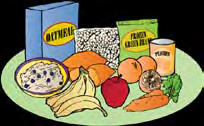
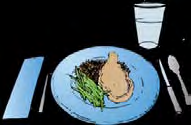


Check Three Things You Will Do To Help
You Lose Weight
❑ Get up 15 minutes earlier to eat breakfast at home.
Include fruit, whole-grain bread, and fat-free or low-fat (1%) milk.
❑ Prepare a heart healthy lunch
the night before. Include
fruits, vegetables, and small
portions of leftovers.
❑ Take a piece of fruit for a snack at work.
❑ Eat smal er portions at
dinner. Eat vegetables every
night or have a salad with
low-calorie dressing.
❑ Drink water instead of soda or other
drinks high in calories and sugar.
❑ Get active at work, at home, and in
your spare time. Walk with your
family or a friend.
Are You at Risk for Heart Disease?
45
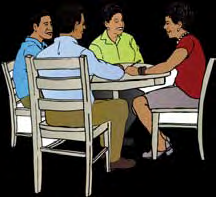

Find Help
■ Ask for help from
the doctor and dietitian if
you need to lose weight.
■ Find out if your community
has heart health classes
taught by community
health workers. If so, join
the classes.
Pass On the Gift
When you maintain a healthy weight,
you are also setting an example of
heart healthy living for your children
and the youth in your community.
Pass on the gift of healthy living and
long life to future generations.
46
On the Move to Better Heart Health

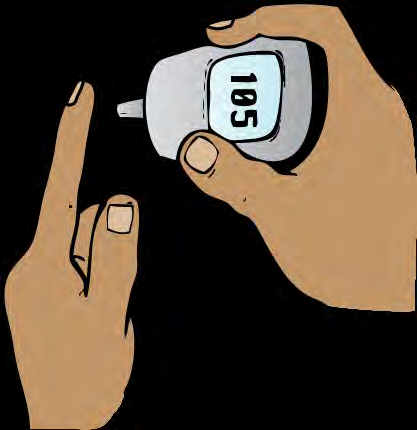
Section 6
: P
rotect Your H
eart: T
ake G
ood C
are o
f Your D
iabetes for Life

Protect Your Heart: Take Good
Care of Your Diabetes for Life
Preventing or controlling diabetes can lower your chances of heart disease, kidney disease, blindness, and dental problems. Did you know that by making simple lifestyle changes, such as being physical y active, eating healthy foods, and losing weight if you are overweight, you can do a lot to prevent or control type 2 diabetes? This section will suggest ways to lower glucose levels or maintain healthy levels.
Ms. Diane Learns About
Type 2 Diabetes
Ms. Diane: “Diabetes runs in my family. My brother and I have type 2 diabetes. I need to know more about it.”
What Is Diabetes?
Diabetes results when the body does not make enough
insulin or cannot use it well. This causes high levels of blood glucose (blood sugar) to build up in your blood.
Diabetes is a serious disease.
Why Is Diabetes Dangerous?
Diabetes is a major risk factor for heart attack and stroke.
Over time, high blood glucose damages the body. Diabetes can lead to blindness, amputation, kidney problems,
and death.
48
On the Move to Better Heart Health

Types of Diabetes
There are two main types of diabetes: type 1 and type 2. Type 1 diabetes happens when the body stops making insulin. Type 2 diabetes occurs when some insulin is made, but the body cannot use it wel . Type 2 diabetes is more common.
You are more likely to get type 2 diabetes if you:
■ Are overweight, especially if you have extra weight around your waist.
■ Have a parent, brother, or sister with diabetes.
■ Are African American, Latino, American
Indian, Asian American, or Pacific Islander.
■ Have had diabetes while pregnant
(gestational diabetes).
■ Have given birth to a baby weighing
9 pounds or more.
■ Have high blood pressure:
• Your blood pressure is 140/90 mmHg or higher, or
• A health care provider has told you that you have high blood pressure.
■ Have cholesterol levels that are not normal:
• Your HDL cholesterol (good cholesterol) is
35 mg/dL or lower, or
• Your triglyceride level is 250 mg/dL or higher.
■ Are physically active fewer than three times a week.
Are You at Risk for Heart Disease?
49
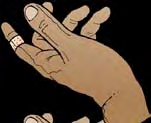






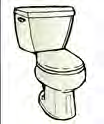
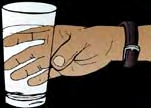
People with diabetes may develop symptoms slowly or may not have symptoms at all.
Symptoms of diabetes may include:
“Pins and needles”
Sores that don’t heal
Blurry vision
feeling in the feet
Feeling irritable
Increased hunger
Very dry skin
Feeling tired
Frequent urination
Increased thirst
50
On the Move to Better Heart Health

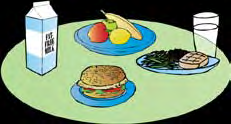
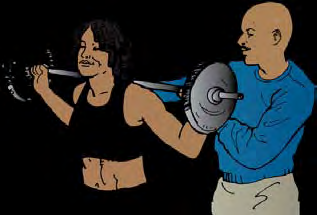
Ms. Diane: “The doctor told my daughter, Tina, that she has prediabetes. Her fasting blood
sugar was 120 mg/dL, and she is also overweight.
We worked together to change our habits. I do
not want her to develop diabetes like me.”
What Is Prediabetes?
Prediabetes is a condition in which blood glucose levels are higher than normal, but not high enough to have
diabetes. People with prediabetes are likely to develop diabetes. If you have prediabetes, you can take these steps to prevent diabetes:
■ Eat foods lower in fat
and calories.
■ Aim for a healthy
weight. Lose weight if
you are overweight.
■ Be physically active on most days.
Are You at Risk for Heart Disease?
51
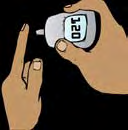
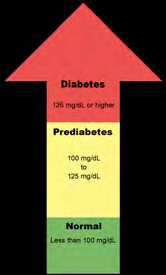
Have Your Blood Glucose Checked
Your doctor can test your fasting blood glucose.
Check the chart on page 69 to see if
your blood glucose level is normal.
Tina’s glucose level is 120 mg/dL.
She has prediabetes.
What Are the ABCs of
Diabetes Control?
■ A is for the A1C test. This test measures how your blood glucose has been for the last 3 months. It lets you know if your blood glucose has been under control. Get this test done at least twice a year.
Number to aim for: Less than 7 percent
■ B is for blood pressure. The
higher your blood pressure, the
harder your heart has to work.
Get your blood pressure checked
at every doctor’s visit.
Numbers to aim for: Below
120/80 mmHg
■ C is for cholesterol. “Bad”
cholesterol, or LDL, builds up and
clogs your arteries. Get your blood
cholesterol tested at least once a year.
Number to aim for: Below
100 mg/dL
52
On the Move to Better Heart Health
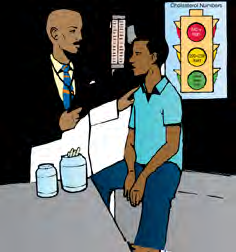

Be Sure To Ask Your Doctor:
■ What are my A1C,
blood pressure, and
cholesterol numbers?
■ If the numbers are not
normal, what actio






































